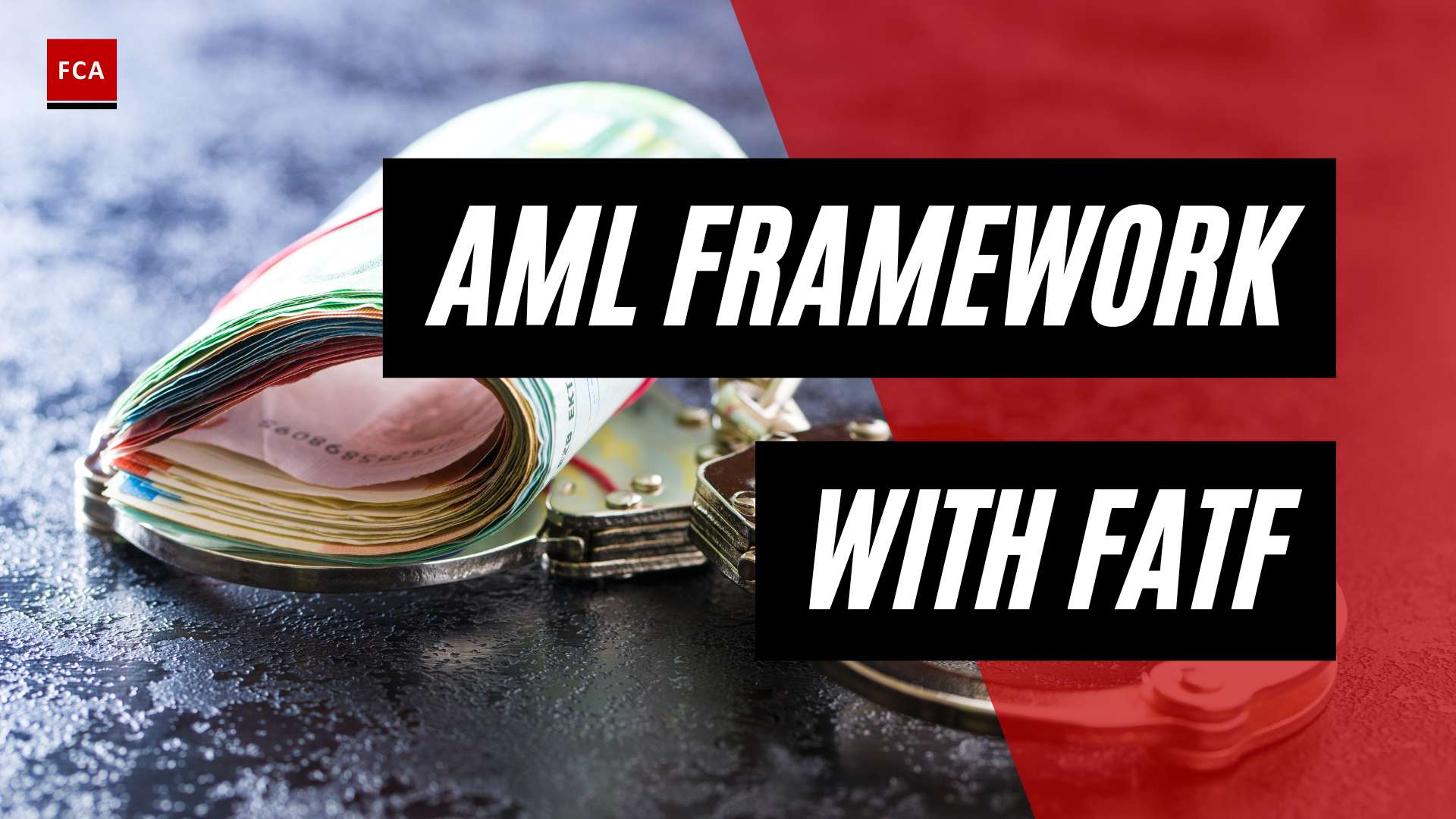Blockchain in Anti-Money Laundering (AML)
In the realm of Anti-Money Laundering (AML), the integration of blockchain technology has emerged as a promising solution to streamline compliance efforts and enhance the effectiveness of AML processes. By leveraging the unique features of blockchain, organizations can improve their ability to detect and prevent money laundering activities. Let’s explore the introduction to blockchain and AML, as well as the benefits it brings to the AML landscape.
Introduction to Blockchain and AML
Blockchain is a distributed ledger technology that enables the secure and transparent recording of transactions. It operates on a decentralized network, ensuring that there is no single point of failure for potential security breaches. This characteristic enhances the security and integrity of AML processes by providing a tamper-proof record of transactions that can be easily audited and verified. The transparency offered by blockchain allows financial institutions and regulators to monitor transactions and detect suspicious activity more easily. Moreover, blockchain’s immutability ensures that once a transaction is recorded, it cannot be altered, providing an accurate and reliable source of information for AML investigations.
Benefits of Blockchain for AML
The incorporation of blockchain technology into AML processes brings several benefits that address the limitations of existing AML solutions. One significant advantage is the automation of transaction monitoring. Traditional AML solutions heavily rely on manual monitoring and reporting, which often results in a high volume of false positives and negatives. Blockchain-based AML solutions can automate the monitoring process, making it more efficient and effective. This automation enables real-time detection and prevention of suspicious activities, improving the overall response time and reducing the risk of financial crimes slipping through the cracks.
Another key benefit of blockchain for AML is the improved traceability of funds. Existing AML solutions often face challenges in tracking the source of funds due to limited traceability. Blockchain, on the other hand, provides a permanent trail of records that cannot be altered, allowing authorities to trace the origin of funds with greater ease. This enhanced traceability enables more effective investigations, aiding in the identification and prevention of money laundering activities.
To further enhance compliance efforts, blockchain can utilize smart contracts. Smart contracts are programmable agreements that automatically execute predefined actions when certain conditions are met. In the context of AML, smart contracts can be used to enforce compliance measures and automatically flag transactions that meet predefined criteria for further review. This streamlines the monitoring process and ensures that AML compliance measures are consistently applied.
By embracing blockchain technology in AML, organizations can enhance transparency, improve efficiency, and strengthen compliance in their efforts to combat money laundering. The future of AML is closely intertwined with blockchain, and as regulatory frameworks continue to evolve, the collaboration between industry stakeholders will play a crucial role in shaping the landscape of AML compliance with blockchain solutions.
Challenges in AML Compliance
Ensuring compliance with Anti-Money Laundering (AML) regulations is a complex task for financial institutions and regulatory bodies. Existing AML solutions often face limitations that hinder their effectiveness in combating money laundering and other financial crimes. This section will explore the limitations of existing AML solutions and the need for innovation in AML.
Limitations of Existing AML Solutions
Traditional AML solutions heavily rely on manual transaction monitoring and reporting processes, which can be time-consuming and prone to errors. These manual processes lead to a high volume of false positives and negatives, resulting in inefficient use of resources and potential oversight of suspicious activities. Financial institutions and regulatory bodies struggle to differentiate between genuine transactions and those associated with illicit activities. This limitation can hinder the effectiveness of AML efforts and hamper the ability to detect and prevent money laundering (Merkle Science).
Another limitation of existing AML solutions is the lack of traceability. Traditional systems often face challenges in tracking the source of funds, making it difficult to identify the origin of suspicious transactions. This limitation can impede investigations and hinder the ability to follow the flow of illicit funds. In contrast, blockchain technology provides a permanent trail of records that cannot be altered, enhancing traceability and making it easier to track the source of funds (Merkle Science).
The Need for Innovation in AML
Given the limitations of existing AML solutions, there is a clear need for innovation in the field of AML. To address the challenges faced in AML compliance, financial institutions, regulatory bodies, and technology providers must explore new approaches and leverage emerging technologies.
Blockchain technology offers promising solutions to enhance AML efforts. By utilizing blockchain, AML software can automate transaction monitoring and reporting processes, reducing the reliance on manual intervention. Automated transaction monitoring can improve the efficiency and effectiveness of AML efforts by reducing false positives and negatives, enabling more accurate detection of suspicious activities in real-time.
Furthermore, blockchain’s transparency allows for enhanced monitoring of transactions. Financial institutions and regulators can leverage blockchain’s immutable and transparent ledger to monitor transactions and detect suspicious activities more easily. Smart contracts can be utilized to enforce AML compliance and automatically flag transactions that require further review. This proactive approach improves the overall effectiveness of AML efforts and reduces the reactive nature of traditional systems (Merkle Science).
In conclusion, the limitations of existing AML solutions call for innovation in the field. Blockchain technology presents opportunities to overcome these challenges by automating transaction monitoring, improving traceability, and enhancing transparency. As financial institutions and regulatory bodies embrace the potential of blockchain and explore its applications for AML, the future of AML compliance holds promise for more efficient and effective anti-money laundering measures.
How Blockchain Enhances AML Efforts
Blockchain technology has the potential to revolutionize Anti-Money Laundering (AML) efforts by addressing the limitations of existing AML solutions and providing innovative solutions to combat financial crimes. Here are three key ways in which blockchain enhances AML efforts:
Automated Transaction Monitoring
Existing AML solutions often rely on manual transaction monitoring, which can be time-consuming and prone to errors. This approach leads to a high volume of false positives and negatives, resulting in inefficient compliance processes. However, blockchain technology can automate the transaction monitoring process, making it more efficient and effective. By utilizing smart contracts and decentralized ledger technology, blockchain enables real-time monitoring and analysis of transactions, reducing the need for manual intervention. This automation improves the accuracy and speed of identifying suspicious activities, enhancing AML compliance and reducing the risk of money laundering (Merkle Science).
Improved Traceability of Funds
Legacy AML solutions often have limited traceability, making it difficult to track the source and movement of funds. Blockchain technology provides a permanent and immutable trail of records that cannot be altered, ensuring transparency and accountability. Each transaction recorded on the blockchain creates a unique digital fingerprint, allowing authorities to trace the origin and flow of funds more easily. This enhanced traceability helps in identifying and preventing money laundering activities by creating a transparent and auditable system (Merkle Science).
Real-Time Detection and Prevention
Traditional AML solutions are often reactive, detecting and responding to suspicious activities after they have already taken place. Blockchain technology enables real-time monitoring of transactions, allowing for the detection and prevention of suspicious activities as they occur. By leveraging data from multiple sources and analyzing transactions in real-time, blockchain-based AML systems can identify irregular patterns, anomalies, and potential risks promptly. This proactive approach enables financial institutions to take immediate action, preventing illicit activities and safeguarding the integrity of the financial system (Merkle Science).
By leveraging the power of blockchain, AML efforts can benefit from automated transaction monitoring, improved traceability of funds, and real-time detection and prevention. These advancements enhance the effectiveness and efficiency of AML compliance, ultimately contributing to a more robust and secure financial ecosystem. As the technology continues to evolve, blockchain’s potential in AML is expected to grow, driving greater transparency and accountability in the fight against money laundering.
Enhancing Transparency and Compliance
In the realm of anti-money laundering (AML), the use of blockchain technology plays a significant role in enhancing transparency and compliance efforts. This section will explore two key aspects of blockchain’s impact on AML: its role in monitoring transactions and the use of smart contracts for AML compliance.
Blockchain’s Role in Monitoring Transactions
The transparency inherent in blockchain technology provides a powerful tool for monitoring transactions and detecting suspicious activity. Blockchain’s distributed ledger allows financial institutions and regulators to access a shared and immutable record of transactions, making it easier to track and analyze financial flows. This transparency enables more efficient monitoring and identification of potential money laundering activities.
By leveraging blockchain, AML software can create a secure and tamper-proof record of transactions, enabling authorities to trace back any activity to its origin. This level of transparency enhances investigations and helps pinpoint possible money laundering activities. With the ability to track funds across multiple accounts and institutions, blockchain facilitates the identification of complex money laundering schemes that might otherwise go undetected.
Smart Contracts for AML Compliance
Smart contracts, which are self-executing contracts with the terms of the agreement directly written into code, can be utilized to enforce AML compliance and automatically flag transactions for further review. These contracts can be programmed to monitor transactions, analyze patterns and behaviors, and trigger alerts when suspicious activity is detected.
By incorporating smart contracts into the AML framework, compliance processes become more streamlined and efficient. Smart contracts can automatically apply predefined AML rules to transactions, reducing reliance on manual reviews and minimizing human errors. This automation enables real-time monitoring and detection of potential money laundering activities, allowing for prompt action to be taken.
Moreover, smart contracts can facilitate the sharing of relevant AML data and information between different entities in a secure and standardized manner. This collaboration helps in combating money laundering by ensuring that all stakeholders have access to the necessary information to identify and prevent illicit financial activities.
By harnessing the power of blockchain technology and smart contracts, the AML landscape can benefit from enhanced transparency, streamlined compliance processes, and more effective detection of suspicious transactions. As the technology continues to evolve, the potential for blockchain to revolutionize AML efforts becomes increasingly evident.
For a comprehensive understanding of blockchain’s impact on AML and related topics such as AML regulations, risks, and challenges, explore our articles on blockchain technology and AML, AML compliance in blockchain, blockchain applications for AML, AML regulations for blockchain, blockchain solutions for AML, AML risks in blockchain, AML challenges in blockchain, AML monitoring on blockchain, and AML investigations on blockchain.
The Future of AML with Blockchain
As technology continues to advance, the role of blockchain in anti-money laundering (AML) efforts is gaining significant attention. Blockchain technology offers numerous potential benefits for AML compliance, including enhanced transparency, reduced costs, and improved collaboration. In this section, we will explore the future of AML with blockchain, focusing on the growth of the AML market, cost reduction and efficiency, and regulatory frameworks and collaboration.
Growth of the AML Market
The AML market is projected to experience significant growth in the coming years. According to LeewayHertz, the global AML market size is expected to reach $1.99 billion by 2026, with a compound annual growth rate of 20.9% from 2021 to 2026. This growth is driven by the increasing need for robust AML solutions to combat financial crime and ensure regulatory compliance. As blockchain technology continues to mature, it is anticipated to play a key role in shaping the future of AML.
Cost Reduction and Efficiency in AML
Implementing blockchain within AML software can lead to significant cost reduction and improved efficiency in compliance procedures. By leveraging blockchain’s inherent features, such as decentralization and immutability, financial institutions can streamline their AML processes, reducing the need for intermediaries and minimizing the time taken to verify transactions. This ultimately leads to cost savings for organizations, as highlighted by AML UAE. Additionally, automation enabled by smart contracts can eliminate manual tasks, optimizing resources and allowing compliance teams to focus on high-risk areas.
Regulatory Frameworks and Collaboration
The future of AML with blockchain relies on the establishment of robust regulatory frameworks and collaboration between industry stakeholders. Regulatory bodies and governments are increasingly recognizing the potential of blockchain technology in enhancing AML efforts. For instance, the Financial Action Task Force (FATF) issued updated guidance in October 2021 for a risk-based approach to virtual assets and virtual asset service providers, aligning the industry with traditional financial systems and anti-money laundering frameworks (LinkedIn). These frameworks provide a foundation for organizations to implement blockchain-based AML solutions while complying with regulatory requirements.
Collaboration between industry participants, including financial institutions, technology providers, and regulators, is essential for driving innovation and ensuring effective AML compliance. By sharing knowledge, best practices, and insights, stakeholders can collectively address emerging challenges and develop standardized approaches to AML in the blockchain ecosystem. Organizations such as Deloitte are actively promoting collaboration on public policy and regional strategies to drive alignment in the financial services sector (Deloitte).
The future of AML with blockchain holds immense potential for transforming the AML landscape. As the AML market continues to grow, organizations can leverage blockchain technology to reduce costs, enhance efficiency, and strengthen compliance efforts. By fostering regulatory frameworks and collaborative initiatives, the industry can collectively drive the adoption of blockchain-based AML solutions, ensuring a more secure and transparent financial ecosystem.
Implementing Blockchain in AML Software
To effectively combat money laundering and ensure compliance, integrating blockchain technology into Anti-Money Laundering (AML) software can be a game-changer. However, there are several challenges that need to be addressed in the process. This section will explore key considerations when implementing blockchain in AML software: overcoming privacy and anonymity challenges, balancing regulatory compliance and user experience, and standardizing AML practices in the crypto industry.
Overcoming Privacy and Anonymity Challenges
Implementing AML programs in the crypto industry presents unique challenges due to the conflict between blockchain technology’s privacy and anonymity features and the transparency required by Know Your Customer (KYC) and Customer Due Diligence (CDD) processes. Crypto entities face privacy concerns and the difficulty of establishing centralized points for collecting and verifying user information, requiring innovative compliance solutions (LinkedIn).
When implementing blockchain in AML software, it’s important to strike a balance between preserving user privacy and ensuring compliance with regulatory requirements. Solutions such as zero-knowledge proofs and selective disclosure mechanisms can be employed to validate user identities without compromising sensitive information. These privacy-enhancing technologies can help overcome the challenges associated with privacy and anonymity in blockchain-based AML systems.
Balancing Regulatory Compliance and User Experience
Traditional KYC and CDD processes can be time-consuming and hinder the user experience when incorporated into blockchain-based platforms. Balancing regulatory compliance with user-friendly solutions without compromising the convenience and speed of cryptocurrency transactions is a significant challenge for crypto providers (LinkedIn).
To address this challenge, AML software utilizing blockchain technology should focus on streamlining the user onboarding process. This can be achieved by leveraging automation, artificial intelligence, and machine learning algorithms to efficiently collect and verify user information while ensuring compliance with regulatory standards. By reducing the friction and time required for user verification, blockchain-based AML software can enhance the user experience while maintaining regulatory compliance.
Standardizing AML Practices in the Crypto Industry
The cryptocurrency industry lacks standardized AML practices and frameworks tailored to cryptocurrencies, leading to confusion and uncertainty among crypto providers. The absence of industry-wide standards complicates navigating the AML landscape effectively and complying with the varied regulatory frameworks across different jurisdictions (LinkedIn).
To address this challenge, industry collaboration and regulatory cooperation are essential. Crypto industry stakeholders, including government bodies, financial institutions, and technology providers, should work together to establish standardized AML practices specifically designed for the crypto industry. This includes sharing best practices, developing common frameworks, and promoting cross-border information sharing to ensure effective AML compliance within the crypto ecosystem. Establishing clear regulatory guidelines will provide certainty and facilitate the adoption of blockchain-based AML solutions.
By addressing the privacy and anonymity challenges, balancing regulatory compliance with user experience, and standardizing AML practices in the crypto industry, the implementation of blockchain in AML software can revolutionize the fight against money laundering. Blockchain technology offers enhanced security, transparency, and automation, streamlining AML processes and ensuring compliance in an increasingly digital and complex financial landscape.









